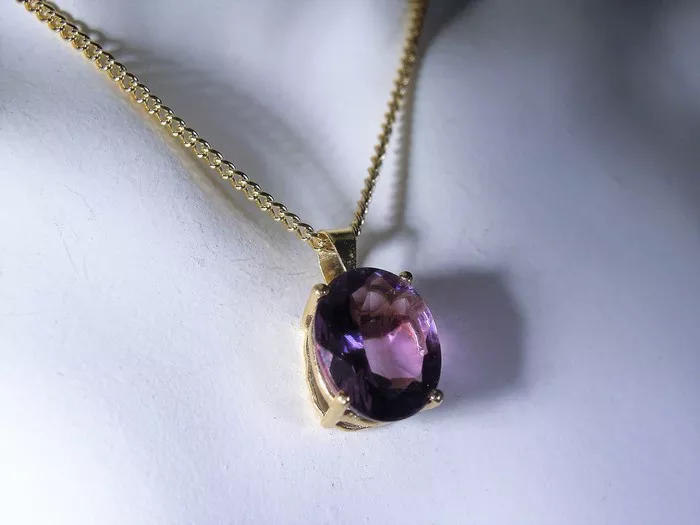Amethyst, with its mesmerizing beauty and rich symbolism, has long been cherished as one of the most beloved gemstones in the world. Renowned for its regal purple hues, amethyst is revered as the birthstone for the month of February, captivating hearts with its captivating colors and fascinating lore. In this comprehensive exploration, we delve into the kaleidoscopic world of amethyst birthstone colors, uncovering the spectrum of shades that adorn this cherished gemstone.
A Brief Overview on Amethyst
Before delving into the nuances of amethyst’s colors, it’s essential to understand the gemstone’s rich history and cultural significance. Amethyst derives its name from the Greek word “amethystos,” meaning “not intoxicated,” as ancient Greeks believed that wearing amethyst could protect against drunkenness and promote sobriety. This association with clarity of mind and spiritual purity has contributed to amethyst’s reputation as a stone of wisdom and enlightenment throughout the ages.
Traditionally, amethyst has been prized for its deep purple hues, reminiscent of the velvety petals of royal robes. In ancient times, amethyst was considered a gemstone of the highest order, reserved for monarchs, bishops, and other esteemed dignitaries. Its association with nobility and prestige has endured through the centuries, cementing amethyst’s status as one of the most coveted gemstones in the world.
What Color is Amethyst Birthstone
While amethyst is renowned for its signature purple hues, the gemstone actually occurs in a spectrum of colors ranging from delicate lilac to deep violet. These variations in color are influenced by a variety of factors, including the presence of trace elements, the gemstone’s clarity, and its geographic origin. Let’s embark on a journey through the enchanting palette of amethyst birthstone colors:
1. Royal Purple:
The quintessential color of amethyst, royal purple exudes a sense of majesty, power, and sophistication. This rich hue, reminiscent of the robes worn by ancient monarchs, is prized for its depth and intensity. Royal purple amethysts are typically found in regions with high concentrations of iron, which impart a warm, reddish undertone to the gemstone’s violet hues. Whether adorning a crown jewel or gracing a piece of fine jewelry, royal purple amethysts never fail to captivate the imagination with their regal allure.
2. Lilac:
At the opposite end of the spectrum lies the delicate hue of lilac, a soft and ethereal shade that evokes feelings of tranquility and serenity. Lilac amethysts are prized for their subtle beauty and understated elegance, making them a popular choice for those seeking a more subdued and feminine aesthetic. These lighter shades of amethyst are often found in regions with lower concentrations of iron, resulting in a cooler, bluish undertone that imbues the gemstone with a sense of freshness and purity.
3. Lavender:
Sitting comfortably between royal purple and lilac, lavender amethysts exude a sense of balance and harmony, blending the warmth of purple with the coolness of blue. This versatile hue is prized for its versatility, complementing a wide range of skin tones and jewelry designs. Lavender amethysts are often found in regions with moderate concentrations of iron, resulting in a balanced combination of warm and cool tones that enhances the gemstone’s overall appeal.
4. Deep Violet:
For those who prefer a more dramatic and intense aesthetic, deep violet amethysts offer a bold and captivating alternative to traditional purple hues. These darker shades of amethyst are characterized by their deep, velvety tones, which exude a sense of mystery and allure. Deep violet amethysts are typically found in regions with higher concentrations of manganese, which impart a cooler, bluer undertone to the gemstone’s purple hues. Whether set in a statement ring or a sleek pendant, deep violet amethysts command attention with their undeniable presence and allure.
5. Rose de France:
Named after the renowned gem-cutting center of France, Rose de France amethysts are prized for their delicate pinkish-purple hues, reminiscent of the blush of a summer sunset. These romantic gemstones exude a sense of femininity and grace, making them a popular choice for romantic occasions and sentimental jewelry pieces. Rose de France amethysts are typically found in regions with lower concentrations of iron, resulting in a softer, more pastel palette that complements a wide range of skin tones and personal styles.
In Conclusion
As we’ve explored in this comprehensive guide, the spectrum of amethyst birthstone colors is as diverse and enchanting as the gemstone itself. From the rich hues of royal purple to the delicate shades of lilac and lavender, each color variant possesses its own unique charm and allure, inviting us to discover the beauty and wonder of amethyst in all its glorious forms. Whether adorning a piece of fine jewelry or serving as a cherished keepsake, amethyst continues to captivate hearts and minds with its timeless elegance and enduring appeal.


